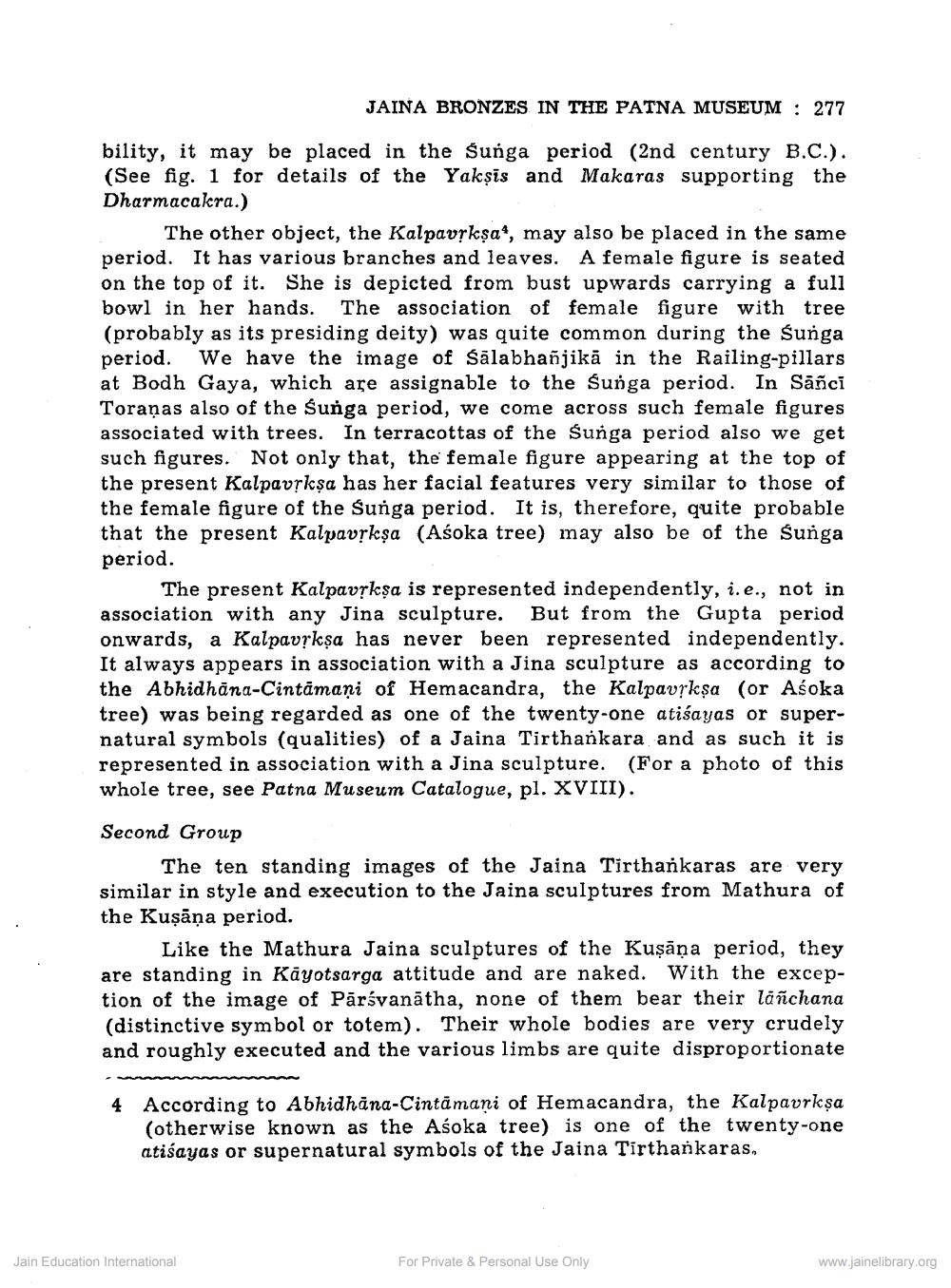Book Title: Jaina Bronzes the Patna Museum Author(s): Harikishor Prasad Publisher: Z_Mahavir_Jain_Vidyalay_Suvarna_Mahotsav_Granth_Part_1_012002.pdf and Mahavir_Jain_Vidyalay_Suvarna_ View full book textPage 3
________________ JAINA BRONZES IN THE PATNA MUSEUM : 277 bility, it may be placed in the Sunga period (2nd century B.C.). (See fig. 1 for details of the Yakṣis and Makaras supporting the Dharmacakra.) The other object, the Kalpavskşa", may also be placed in the same period. It has various branches and leaves. A female figure is seated on the top of it. She is depicted from bust upwards carrying a full bowl in her hands. The association of female figure with tree (probably as its presiding deity) was quite common during the Sunga period. We have the image of Sālabhanjikā in the Railing-pillars at Bodh Gaya, which are assignable to the Sunga period. In Sāñci Toranas also of the Sunga period, we come across such female figures associated with trees. In terracottas of the Sunga period also we get such figures. Not only that, the female figure appearing at the top of the present Kalpavệksa has her facial features very similar to those of the female figure of the Sunga period. It is, therefore, quite probable that the present Kalpavrkņa (Asoka tree) may also be of the Sunga period. The present KalpavȚksa is represented independently, i.e., not in association with any Jina sculpture. But from the Gupta period onwards, a Kalpavşkşa has never been represented independently. It always appears in association with a Jina sculpture as according to the Abhidhāna-Cintamani of Hemacandra, the Kalpavşkşa (or Asoka tree) was being regarded as one of the twenty-one atiśayas or supernatural symbols (qualities) of a Jaina Tirthankara and as such it is represented in association with a Jina sculpture. (For a photo of this whole tree, see Patna Museum Catalogue, pl. XVIII). Second Group The ten standing images of the Jaina Tirthankaras are very similar in style and execution to the Jaina sculptures from Mathura of the Kuşāņa period. Like the Mathura Jaina sculptures of the Kuşāņa period, they are standing in Kayotsarga attitude and are naked. With the exception of the image of Pārsvanātha, none of them bear their lañchana (distinctive symbol or totem). Their whole bodies are very crudely and roughly executed and the various limbs are quite disproportionate 4 According to Abhidhana-Cintamani of Hemacandra, the Kalpavrksa (otherwise known as the Asoka tree) is one of the twenty-one atiśayas or supernatural symbols of the Jaina Tirthankaras, Jain Education International For Private & Personal Use Only www.jainelibrary.orgPage Navigation
1 2 3 4 5 6 7 8 9 10 11 12 13 14 15
